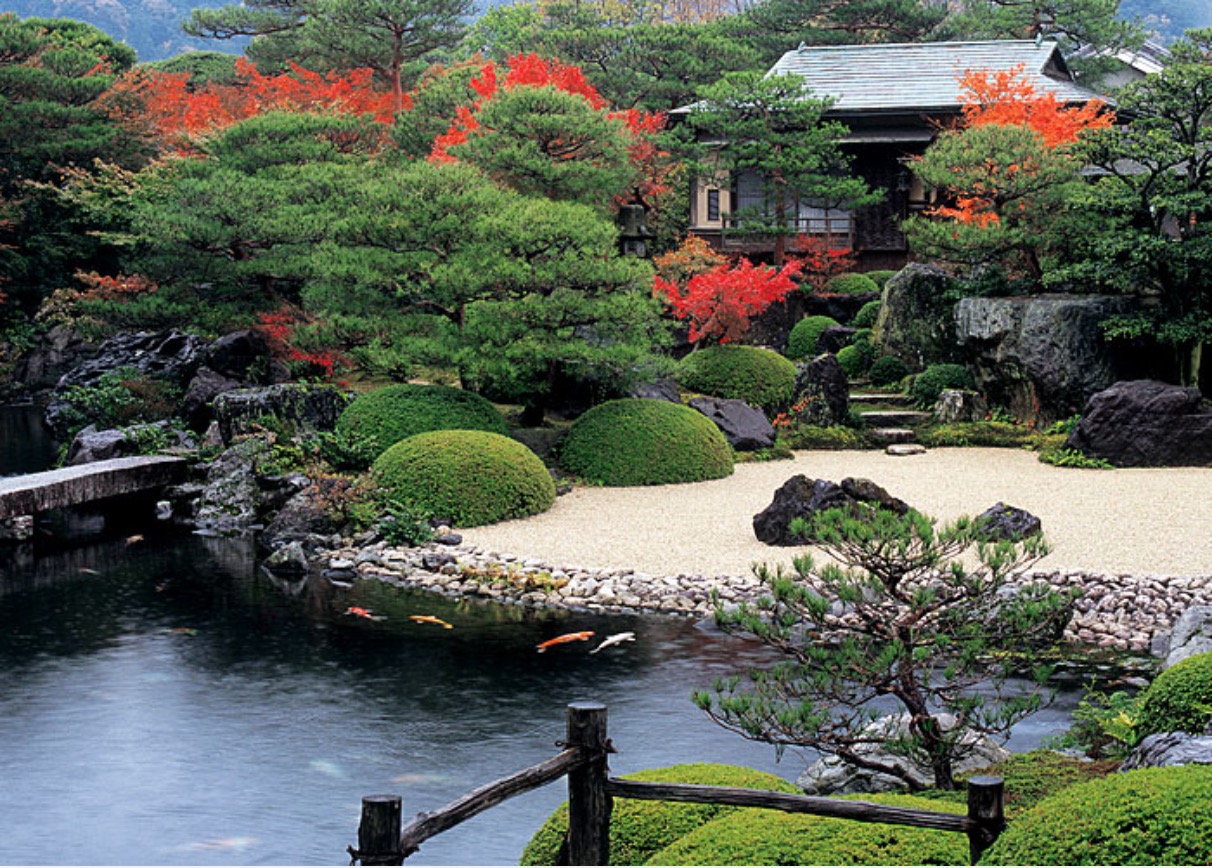Japanese rock gardens, which are commonly referred to as Zen gardens, incorporate a variety of different elements of nature to create a calm, relaxing setting. Along with decorative rocks, carefully pruned trees and shrubs, and other elements of nature, these gardens incorporate a large area of sand or gravel. A rake is used to imprint the sand or gravel with a pattern that is meant to represent water ripples. Zen gardens are often designed to be viewed from a distance. In some instances, the rocks in the gardens are given the same names as Asia’s most well-known mountains.
In ancient times, Buddhists used these gardens to assist them during meditation. It is largely because of this that so many traditional Japanese rock gardens are located inside Buddhist monasteries. What makes these gardens special is that they have managed to not only survive but also to maintain their beauty over an incredibly long period of time.
Today’s world is filled with distracting elements, many of which create extremely high levels of stress. Spending time in a simple garden surrounded by beautiful rocks and elegant patterns in the sand has a deeply relaxing effect on both the body and the mind. To understand the benefits of drawing designs in the sand, all that you have to do is watch school children playing in a sandbox. They become so focused on the task at hand that they ignore what is happening around them. The same thing happens for adults, which can provide a much-needed break from the stress of everyday life.
Of course, Zen gardens are much more intricate than anything that could be designed by a young child. In fact, many of the oldest gardens feature designs that were heavily influenced by the principles of mathematics. A good example of this can be seen in Kyoto’s Ryoan-ji Zen temple. This garden, which was initially designed in the 15th century, features 15 large rocks. What makes these boulders unique is the way that they are positioned. When you view the garden, there is no way to see more than 14 of the boulders at a single time, no matter which angle you are viewing it from.
To achieve this design, the garden was constructed using the principle of reflection symmetry. In essence, the viewer’s focus is disrupted by the axis of symmetry, changing the way that the scene is perceived. What that means is that the concept of calculus was most likely around long before it was officially “invented”. In this case, the people who built the temple held the belief that in order to view the 15th boulder, you had to achieve enlightenment.
Apart from the mathematical principles underlying the design of many of these gardens, they are also well-known for their imaginative elements. For instance, in these gardens, sand or gravel is used to represent water. You can always used one of these fountains from Soothing Walls either. Rocks can also act as symbols, often representing creatures like dragons or tigers or parts of the body like the mind or the heart.
A Western Take On Zen Gardens
Zen gardens have found their way into Western society over the years. In 1935, an author by the name of Lorraine Kuck is credited with coming up with the term ‘Zen garden’. However, the outdoor Zen garden that is located in Golden Gate Park in San Francisco is considered to be one of the first places where these gardens were introduced to the West.
Ultimately, the goal of these gardens is to provide a peaceful, serene environment for anyone who views them or steps inside. They can be found throughout the US, often located near places of cultural significance for Chinese or Japanese citizens. You can also find them in museums or Buddhists temples.
Although many people love the idea of having one of these gardens of their own, they may not have enough space available outside their home to make their dream a reality. Creating a Zen garden that is beautiful enough to rival traditional Japanese rock gardens can be challenging. Fortunately, however, you can achieve the same effect by creating a miniature version of a Zen garden. The next section takes a closer look at the design of these gardens and provides detailed information on how you can make one yourself.
Miniature Zen Gardens
Although you can find small Zen Gardens available for sale at garden shops and stores that specialize in New Age products, it is a lot more exciting to put your creativity to work by designing one of your own from scratch. The good news is, it doesn’t take a lot of time or money to create a beautiful miniature garden.
All that you need to get started are a handful of simple supplies. Start by cutting a piece of wood into a 9-inch square. Next, cut two 9-inch pieces and two 11-inch pieces off a 1-inch diameter dowel. Grab a bottle of wood glue, some attractive stones, a long twig, some fine-grained sand, and a saw that you can use for cutting the wood. Once you have all of these supplies, you are ready to go.
Begin by gluing the lengths of dowel that you cut earlier around the outer perimeter of the wooden square. Once the glue has a chance to dry, sand any rough areas so that the base is smooth and even. If you want, you can stain it. Otherwise, you can leave the wood natural. Add fine-grained sand to the box, along with the stones that you gathered. Transform your twig into a rake by cutting and gluing pieces together to create a design similar to the rakes that you can find in traditional Zen gardens.
Putting Your Garden To Use
Once you are done making your small garden, you can begin using it as a tool for meditation. Keep it nearby so that you can spend time carefully drawing patterns in the sand with the small rake.
Don’t use fast, jerky movements. Instead, focus on moving in a controlled, slow manner to promote deeper relaxation. Create different arrangements with the stones as you focus on your garden. Then, use your rake to create new patterns around the stones. Use your garden as often as you can to take full advantage of its calming effect. You may find that you feel more relaxed and that you develop a sense of inner peace as you focus on your garden.
If you want to add a whimsical touch to your garden, you can also purchase tiny accessories. For instance, you can add a miniature pair of sandals or a tiny umbrella to make your garden a little bit more fun.
If you find yourself frequently feeling stressed at work, bringing one of these gardens into your work area could help. If your office is too small to accommodate a garden, you can always frame a photograph of a traditional Zen garden to bring a sense of peace to your work area. You can further enhance your office by printing out inspirational quotes. If you have a break during the day, consider taking a minute to visualize yourself drawing patterns in a Zen garden in your mind. Although it is not quite the same as the real thing, this type of visualization can be equally as effective at relaxing your body and mind.
Ultimately, Zen gardens are designed to promote a sense of inner peace and serenity. By helping to reduce stress levels, they can boost your health. They can also make you more productive. Drawing patterns in a Zen garden is never a waste of time since it gives you a chance to recharge your batteries and refocus your mind.

